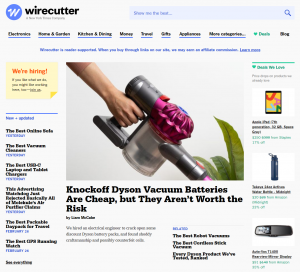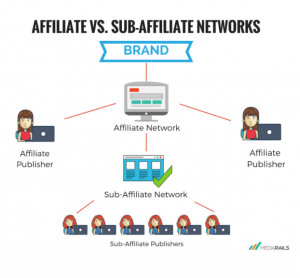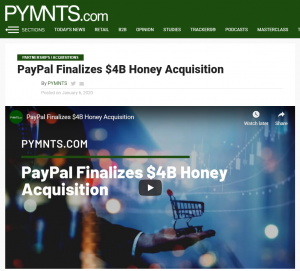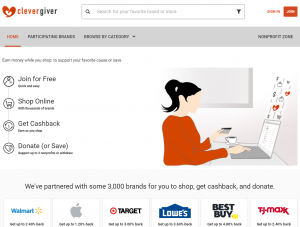Have you reached an impasse in your affiliate recruitment efforts or you have yet to see results despite onboarding all the major affiliate types? I like to think of affiliate programs as boxes of chocolates. I prefer boxes that contain various types of chocolate (white, dark, milk) with various fillings, and flavors. However, many brands still offer boxes with only one or two chocolate varieties.
Similarly, according to the Awin Report 2020, publisher diversification is still at low rates in the U.S. Most affiliate programs rely on cashback & loyalty, content, and coupon affiliates, with email, PPC, and display affiliates struggling for a piece of the pie.
Variety should be at home in any affiliate marketing program. Most, if not all affiliate categories have something to offer to the right affiliate program. The trick is to understand their potential, take advantage, and be able to prevent and fight affiliate marketing parasitism and behaviors that do not add value.
So, having recruited several promising affiliates from the major categories does not mean that you should stop recruiting. On the contrary, you should continue and expand your affiliate recruitment efforts to other categories as well. While we have no reason to doubt Awin’s numbers, just because this is the situation with most affiliate programs, it does not mean yours cannot break the pattern.
Geno identified no less than 18 types of affiliates, many of which merchants overlook. I’ve reorganized and updated the list to 20 affiliate types, but their number, order, or category name are less important than their potential to grow or harm your affiliate program. We will take a closer look at them in the following lines. So, let’s get going…
1. Content Monetization Platforms
As Rosemarie Spiher explains in her guide to content monetization platforms, these are basically tools that allow publishers and magazines to automatically embed affiliate links into their website content without having to join individual affiliate programs and get their affiliate links.
For you, this means being connected to hundreds or thousands of publishers in your niche without actually needing to reach out to them individually. VigLink and SkimLinks are the most popular content monetization platforms and the top performers in many affiliate programs, but other platforms, like Digidip, have emerged as well and are slowly catching up.
2. Datafeed and Coupon Aggregators
Just like content monetization platforms help content publishers monetize their content, platforms like FMTC help datafeed and coupon publishers monetize their websites. For you, working with such platforms could mean having your products or services promoted by hundeds of datafeed affiliates without having to reach out to them individually. You will only reach out to the platforms they use, like former eBates now Rakuten, and others.
3. Content Affiliates
As the above-mentioned Awin report shows and as you are surely aware, these are the most desirable type of affiliates. The category includes blogs, magazines, newspapers, news websites, etc. Think Forbes, Inc.com, Wirecutter (acquired by The New York Times itself), Business Insider, TechRadar, LifeHack, Healthline, and many other smaller but still valuable publications.

Besides having a huge potential to drive sales, especially when they’re established authorities in your niche, they can also help you build and grow your brand, boost your website traffic, and improve your SEO rank.
4. Coupons and Deals Websites
Did you know that 60% of online shoppers worldwide look for coupons and discounts before buying from a retailer they are not familiar with? Even more do so in the U.S., their favorites being websites like Groupon, RetailMeNot, Offers.com, Coupons.com, and others. Perhaps you don’t think these affiliate types can add value to your affiliate program but think of it this way: if they’re not promoting you, they’re promoting your competitors.
The least you can do, before deciding whether you want coupon affiliates in your program or not, is to look at what your competitors are doing. Usually, a selective approach and careful policing is the best strategy but, of course, the specifics of your products or services and of your affiliate program matter as well.
5. Loyalty and Cashback Affiliates
Just like your bank offers loyalty points, miles, or cashback on the purchases you pay for with your credit card, these publishers offer their audience rewards to shop through their websites or apps. The rewards can be anything from cashback to gift cards, free products, virtual currency, or even employee perks.
These affiliate types may not be a good fit for some programs. Also, they do not always add value. In theory, all they do is share their affiliate commission with their audience. In practice, many have developed apps and browser extensions that prompt users to shop through their links when the user is already on the merchant website. This way, they earn commissions they are not really entitled to, sometimes from the affiliates who actually referred the sales.
6. Charities
These organizations encourage their supporters to shop through their affiliate links and rely on commissions for financing. They can range from NGOs to schools, hospitals, and all types of local and national institutions, and other nonprofits. It’s worth trying to establish direct relationships with them, attempting to turn them into affiliates for you. Depending on the specifics of your affiliate program, they may be difficult to find and onboard but they can add value and help raise awareness of your brands and products or services. If you’re not sure where to look, start with the nonprofits participating in Amazon Smile.
7. Nonprofit-Oriented Affiliates
The publishers in this category are basically a hybrid between loyalty and charity affiliates. They give shoppers the possibility to redirect their cashback to a charity organization of their choice.
Some such affiliates may, actually, not be the best option for your program. Using toolbars, they can prompt your website visitors to activate cashback and override other affiliate cookies. This way, they get commissions from visitors who would have shopped with you anyway or steal commissions from your other affiliates.
Others, like CleverGiver, can really help boost your sales while also supporting worthwhile causes. They basically intermediate your relation with charities and nonprofits described above and their supporters, saving you valuable time, effort, and diminishing risks.
8. Brands in Your Niche
Also, look towards partnering with other brands in your vertical. Specifically, look for those merchants who target the same audience and offer products related but not competing with yours. Let’s say you sell mattresses and pillows. You could partner with merchants selling bedroom furniture, sheets and pillowcases, or snoring devices.
While the benefits are obvious, it is important to choose your partners carefully and clearly establish the details of your partnerships. You should be prepared to reciprocate what you ask for, so, if you are not willing to recommend certain merchants, don’t ask them to recommend you!
9. Brand- or Domain-Oriented Affiliates
These marketers create websites and social media profiles using your brand, domain name, or mistyped versions of those. Some merchants agree to work with them but, personally, I find the decision very risky. You should think twice before allowing anyone to use your trademark and/or brand name, as the harm could by far outweigh the benefits. You should also stay away from affiliates who use competitor brands in their domain names or social media profiles. If they do it in competing programs, chances are they’ll do it in yours as well.
10. Data Feed Affiliates
As the category name suggests, this type of affiliates uses your data feed to promote your products and services. Common examples include price comparison engines and shopping directories. While some merchants can benefit from working with them more than others, there is, as usual, a catch.
In order for the merchant/affiliate relationship to work, you need to provide your affiliates with accurate datafeeds, update them whenever necessary, and send timely notifications on the subject. It wouldn’t benefit anyone to have affiliates promote products or services that you no longer offer or advertise prices that you can no longer match.
11. Email Marketers
These affiliates can belong in almost any of the above affiliate types but have one important thing in common: targeted, comprehensive email lists. They can be bloggers, coupon websites, news websites, or even niche verticals. If they are willing to email their subscribers about your brand, products, or services, they could make great affiliates. Just be careful not to affiliate yourself with spammers, as you may obtain the opposite effect and harm your own brand and reputation.
12. Mobile-Oriented Affiliates
In times when ~80% of mobile users search the internet from their devices, ~75% of shoppers combine mobile device shopping with physical shopping, and 40% of online transactions are generated from mobile devices, you simply cannot afford to neglect mobile users.
Mobile-oriented affiliates like app developers (think shopping, finance, cashback, news apps, games, and more), mobile search affiliates, and others can help you reach out to them. Again, your diligence is required, as you certainly do not want your brand associated with intrusive, dangerous apps, or subject to deceitful advertising.
13. Paid Search Affiliates
The marketers in this category often qualify as other affiliate types as well. The category refers to the marketing methods they use, in this case, paid search engine ads. While these affiliates can certainly add value, before allowing them into your program, you should have a clear PPC policy in place.
This is especially true if you reward other types of actions besides sales. Do you want these affiliates bidding on your brand terms and their misspellings or variations? Do you want them to link directly to your website? Geno covers all these issues and more in this post on Aspects to Consider While Affiliate Paid Search Policy.
14. Pay-Per-Call Affiliates
Marketers in this category drive inbound phone calls in exchange for a commission. Whether or not pay-per-call affiliates can benefit your affiliate program and fit in with your other affiliate types depends heavily on your business-specific. One thing is certain, if you want to employ this remuneration model, you will need to find a viable solution to track referrals. Generally, pay-per-call works best for service providers (legal, auto service, travel, insurance, etc.) but it has proven effective for high-end products as well, especially when combined with click-per-sale or click-per-lead.
15. Rankings and Reviews Websites
These affiliates review, rank, and list products and services. Besides driving sales, their endorsements can help grow your brand and reputation. Recruiting and activating them can be challenging, but with due effort nothing is impossible.
Many review-oriented and rankings-compiling affiliates will request free samples or access to your services without even guaranteeing a positive review or any type of promotion. You should also be ready to offer preferential commissions, at least to those focusing on your specific niche. It should be worth it, though, as you will build brand trust.
16. Remarketing Affiliates
These are basically agencies that will market your products and services through various means, sometimes to the same audience you’ve targeted yourself, in exchange for the affiliate commission. Neil Patel’s post here does a great job explaining remarketing and the difference between it and retargeting.
Some remarketers could easily turn into super affiliates and help your brand and your affiliate program. However, you should still check their reputation and monitor their activity closely. Since you’re trusting them with your brand and reputation, you cannot afford nasty surprises.
17. Social Media Publishers
You can also call them microinfluencers. They leverage their social media following to promote your products or services. Some are niche-focused and run popular social media pages, meaning that they can promote your products or services as an authority in the field. Others will recommend them from a user’s standpoint.
Results can vary from mediocre to incredible but, again, you should be careful with whom you associate your brand and products. You may want to stay away from political affiliations and extreme perspectives, to keep your brand name out of media scandals. Also, do not expect extraordinary results from your recruitment efforts, as many microinfluencers still prefer upfront payments to performance-based agreements.
18. Sub-Affiliate Networks
These are basically companies with sub-publishers who will be doing all the marketing. What they do is intermediate your relation with the respective publishers, taking some of the load off your shoulders and retaining part of the commissions in the process. The concept is very well illustrated in this image I borrowed from MediaRails.
While there is no denying that some networks, like FlexOffers and RewardStyle, can be a great addition to your affiliate program. Others, however, can be a form of disguise for affiliates you otherwise would not accept or pay lower commissions to. Geno explains what happens when affiliates disguise behind sub-affiliate networks here.
A similar yet different alternative are affiliate referrers. Instead of promoting your products to end-consumers, they promote your affiliate program to other publishers. They can be affiliate forums, affiliate marketing websites, or business coaches and speakers.
To work with them, you would need a two-tier affiliate program. In one, you reward qualifying actions, be they sales, leads, calls, etc. In the other one, you reward affiliate referrals, either by one-time fees or by recurring commissions. Close management is vital with this type of affiliates as well. Some will try to refer themselves simply to increase their commission.
19. Software / Toolbar Affiliates
Affiliates in this category use software, toolbars, and browser extensions to drive sales. Some resort to adware, malware, and other strategies. Geno covered them and suggested additional resources in this post on Affiliate Toolbars, Adware and Malware: 19 Resources to Study.
Others, however, may be valuable assets to any affiliate program. For example, some software developers have low-priced or free alternatives for their products, which they monetize with ads. They could bring your products in front of the right eyes. Think online wallets, video, audio, and graphics editing software, etc.
Others, like Avast SafePrice, have such a great reputation that partnering with them would surely inspire confidence and benefit your brand. As usual, it is important to choose and police your affiliates carefully. You have to protect not only your brand and reputation but also your other affiliates.

PayPal’s acquisition of Honey is noteworthy in this context. Last month, the giant paid no less than $4 Billion for what is, essentially, a toolbar-dependent/oriented affiliate.
20. Video and Podcast Affiliates
They could easily qualify as content or review affiliates. It just seemed right to place them in a different category because their marketing methods are more interactive and challenging. They promote products and services through video, audio, or combinations of the two.
Buyers often look up video demonstrations of the products or services they wish to buy. Many also listen to podcasts and will follow recommendations received this way. I’ve seen some very talented affiliates who use animations to promote various products and services.
In times when buyers are more distracted than ever and competition is tight, video and audio affiliates are worth gold. They can help you draw attention and convert. As with the other affiliate types, though, choose your collaborators carefully and supervise their activity.
Which Affiliate Types Drive the Best Results in Your Program(s)?
As a merchant or affiliate program manager, you want many affiliates, from as many above categories as possible. However, do not let this goal prevent you from reviewing each affiliate application thoroughly. You should only approve those who can add value to your program.
As you get to it, would you mind sharing which of the above affiliate types are active in your program and drive the best results? Also, get in touch if you feel that your affiliate program lacks diversity and you need help onboarding some of the above types of affiliates! We will gladly answer questions and provide advice in a free consultation. We can also work with you to turn your goals into reality!

